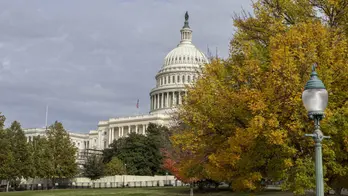Feeling alone? 5 tips to create connection and combat loneliness
Around the globe, about 1 in 4 adults says they're lonely. And the consequences of long-term social disconnection can be dire — everything from an increased risk of heart attacks to dementia and premature death.
But social isolation isn't new or uncommon. And pangs of loneliness aren't catastrophic. In fact, they're nearly universal. What's critical is how people respond to these feelings when they arise.
"Just like thirst is a signal you need hydration, loneliness is a signal that you need human connection, says Dr. Jeremy Nobel, a primary care physician and author of the new book Project UnLonely, which offers a road map to make connections, using creative expression as a means to communicate.
Many factors can increase vulnerability to loneliness, including trauma, sickness or being part of a marginalized group. The bent toward individualism and independence, woven into U.S. culture, may play a role too. The mindset of pull yourself up by your own bootstraps and fend-for-yourself autonomy, "it is part of the American psyche," Nobel says.
Of course, it's possible to be both independent and socially connected, but in recent decades, as societal norms have changed, there are countervailing forces that may make some people more susceptible to loneliness.
"A hundred years ago, your identity was almost fully defined by your gender, your religion and your status," Nobel says, and there wasn't much flexibility to alter it. Now, people have more freedom to chart their own course and create their own identities. "It's both a set of opportunities and a set of challenges," he says, since the process of determining who you are and where you fit in can be disorienting or confusing.
When there's not a prescribed way to "belong," finding connection can be tough. Many people are hesitant to put themselves out there, or they have a hard time communicating what's on their minds. "This is where the arts can be very powerful because they act as a catalyst to make it easier," Nobel says. Drawing a picture may seem like a solitary act, but it can be a bridge to connection, a way to express what's on your mind.
Nobel is a poet. "I feel like I'm in a conversation with a reader I'm imagining when I write a poem," he says. It's one of the art forms that helped him overcome the trauma and loneliness he experienced as a teenager after his father's death and as a young adult after the death of two close friends. As a believer in the medicinal power of creative expression, he founded the Foundation for Art & Healing about 20 years ago.
Some of his earliest work was with active-duty service members and veterans returning from Iraq and Afghanistan with post-traumatic stress. They gathered in small groups to engage in artistic expression and mindfulness activities. At this point, Nobel's main focus was helping people deal with trauma. "People began telling us that not only were they less stressed out, but they felt more connected to each other, something I later realized was addressing a certain kind of loneliness," Nobel says.
Project UnLonely now partners with community-based organizations to develop evidence-based creative expression programs, which can include music, painting, drawing and beyond. Nobel says the options are endless. "Culinary arts is a big one," he says. Many people find creative expression through cooking and baking. There are also textile arts such as knitting, crocheting or quilting. Even gardening is a form of artistic expression. "It's what a friend of mine calls the world's slowest performance art form," Nobel says.
Research shows making art or even viewing the work of other people reduces levels of the stress hormone cortisol. It also increases levels of the feel-good hormones, including dopamine, endorphins and oxytocin. "So what the arts do is they relax you and put you in a good mood," Nobel says, which can help create an inviting vibe to connect. One of the goals of Project UnLonely is to encourage people to get started on their own. Here are some tips to get going.
1. Be curious
It's easier to connect with people if you have shared interests or experiences, so start paying attention to what's on your mind. What are you thinking about? What motivates you? What excites you? Nobel says knowing yourself can be a first step to bonding with others. "I think connecting authentically with other people is best done — and perhaps only done — if you have some kind of authentic connection with yourself," Nobel says. If you know what's meaningful or fun for you, it may lead you to an activity or creative outlet that connects you to people who share your interests.
2. Make something
"When we say make something, people immediately say, 'Well, I'm not Picasso. I don't know how to do a fancy painting,'" Nobel says. And, of course, you're not! But the opportunities for creative expression are endless. "Do a doodle [or] a dance move," Nobel suggests. Resurrect your grandma's pie recipe, plant an herb garden, try a textile art. "Make something that puts your thoughts and feelings and vision about who you are and what matters into a tangible artifact that then can express those thoughts and feelings to others," he says.
3. Take a risk by having conversations
"Share something about yourself," Nobel says. "It doesn't have to be the biggest, darkest secret of your life, but just something you think other people might find interesting and compelling, and see where it goes." Even if you're nervous about being judged or dismissed, putting yourself out there requires a bit of a risk, and it's the first step to authentic connection. If you've made something — say your doodle or dance move or pie — this can be a catalyst to sharing. Simply explaining what you've made may make it easier to open up about who you are.
4. Find a group that matches your interests
Whether it's volunteering for a cause you believe in or playing frisbee or Scrabble, try to find others who share your interests. And if you follow your natural curiosities, you may find something new. In his book, Nobel describes an online group that has a quirky shared interest: a fascination with brown bears in Alaska, which led to Fat Bear Week.
"Share your thoughts and feelings in creative ways with other people who have that interest," he says. And, hopefully, in those interactions you can begin to reveal yourself and share the unique things that matter to you. "Then, other people recognize that, share their story in return, and it's like an electric circuit is connected," he says.
5. Other people's loneliness matters too
Loneliness can spiral. If the pangs of loneliness go unaddressed, people can end up in a world of hurt. "If you see someone who's experiencing loneliness, tolerate the risk of asking them how they're doing," Nobel says. Be kind. Be willing to share something about your own experiences of loneliness, and take that risk. "Other people's loneliness makes us lonely too," he says.
This story was edited by Jane Greenhalgh.
Disclaimer: The copyright of this article belongs to the original author. Reposting this article is solely for the purpose of information dissemination and does not constitute any investment advice. If there is any infringement, please contact us immediately. We will make corrections or deletions as necessary. Thank you.







